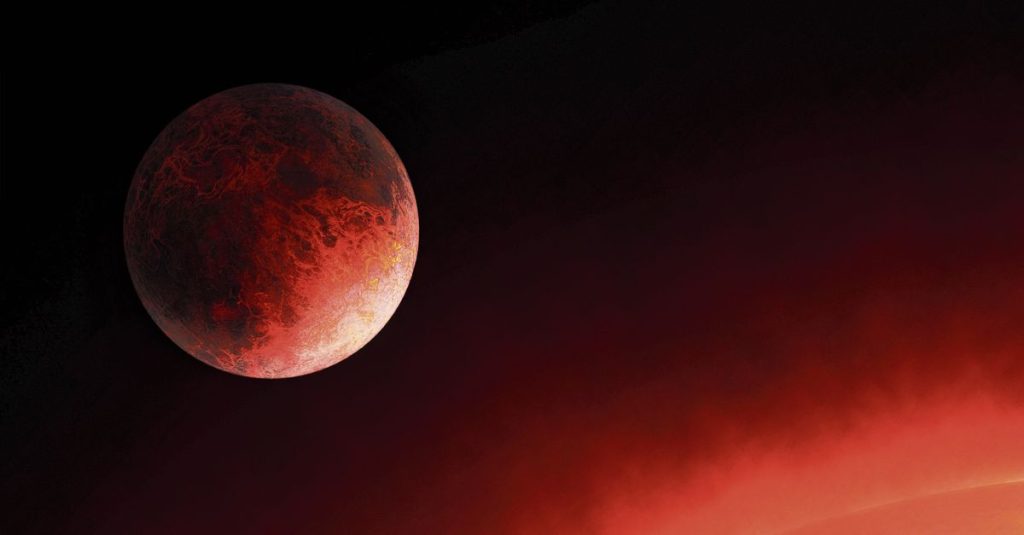Exoplanet hunters have discovered a massive minor planet thought to consist mostly of iron, which is partially melted on the detection side. A “year,” in one orbit around the parent star, takes less than eight hours.
Exoplanet GJ 367b appeared in measurements by TESS (Transiting Exoplanet Survey Satellite), a NASA satellite in space that searches for small temporary dips in stars’ brightness. This dip could be caused by a planet moving in front of the parent star, temporarily blocking vision. In this case, the star GJ 367, a red dwarf about 31 light-years from Earth, is in the constellation “Sailing” (roughly only visible from the Southern Hemisphere).
GJ 367b orbits the star in 7 hours and 43 minutes, which is a relatively short “year.” It’s small, relatively heavy, and very close to the star, which makes it look like an extreme version of Mercury, but it glows with heat. Researchers from 49 scientific institutes published The discovery last Friday in the scientific journal Science.
The researchers confirmed the discovery of the TESS satellite and deepened it further with the HARPS spectrometer, part of a telescope at La Silla in Chile that is specially equipped to search for exoplanets. HARPS measures the small movements of a star under the influence of the planet’s gravity. From this, the mass of GJ 367b can be calculated: 55% of the mass of the Earth. It has a radius of 4,600 km (72 percent of the radius of the Earth), and this indicates a suitable density of about 8 tons per cubic meter, that is, almost the density of pure iron.
iron core
This reminds us of Mercury, the planet closest to the sun. Mercury also consists largely of an iron core, without a mantle and crust of relatively light rock. One possible explanation is that Mercury once included them, like other rocky planets in the making, but were swept away by a collision with another rock in the turbulent early years of the solar system. Something similar may have happened to GJ 367b, and the discovery could shed more light on the origin of planetary systems.
GJ 367b is much closer to its star than Mercury: a million kilometers. Mercury is 58 million km from the sun. This allows the exoplanets to catch a lot of light and radiation. According to researchers’ estimates, the surface temperature during the day varies between 1,300 and 1,500 degrees Celsius. This is just below the melting point of iron of 1,538 degrees. So it is possible that pools or lakes of liquid iron will form on the surface, and if there is an atmosphere, it consists of evaporated minerals and minerals. By the way, there is no real question about day and night, because due to the movement of the tides, it is possible that GJ 367b has always turned the same side towards the star. Extraterrestrial life seems improbable.
smallest planets
in a to interview he met temper nature Lead author Christine Lamm from the Technical University of Berlin says she will explore this atmosphere more closely with the help of NASA’s James Webb Telescope, which is due to launch later this month.
GJ 367b is one of 4,576 confirmed exoplanets that have been mapped since the first planets outside our solar system were discovered in 1992. At first, these were mainly heavy exoplanets, because they are so easy to spot. But with increasingly sensitive technologies and with the help of specialized telescopes and satellites, smaller planets have been added to the list, including now the tiny and massive planet Mercury.
A version of this article also appeared on NRC on the morning of December 7, 2021

“Coffee buff. Twitter fanatic. Tv practitioner. Social media advocate. Pop culture ninja.”









More Stories
Long Covid or long fax?
A Dutch touch for space crash testing
Impact testing in space has a Dutch touch